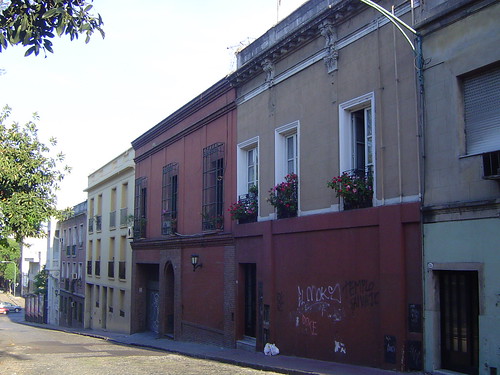April 2007
Monthly Archive
[This photo is from February 2003.]
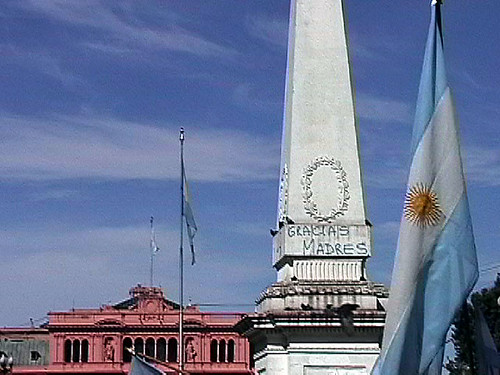
As I mentioned yesterday, 30 April marks the 30th year of the Madres de Plaza de Mayo. Until seeing Clarín this morning I didn’t realize that one of the Madres’ groups – Línea Fundadora – had its celebration on Sunday. (Political differences have fragmented the Madres). This afternoon at 3 will begin a long concert in the Plaza to celebrate the Madres led by Hebe de Bonafini.
I just noticed on the official Madres Web site a scrolling banner about today’s gathering that says “Un sueño: el Socialismo” and that Cuban cultural minister Abel Prieto will be one of today’s participants. …..I’m going to refrain from an editorial comment but make of that what you will.
Anyway, let’s go back to the early days of the Madres, thirty years ago, before the Madres fragmented into different organizations. I want to quote from the book Searching for Life: The Grandmothers of the Plaza De Mayo and the Disappeared Children of Argentina about an early gathering of the Madres in the Plaza. While this book deals mostly with the Abuelas de Plaza de Mayo (yet another group of Madres but one that doesn’t march in the Plaza), the book is excellent reading.
about an early gathering of the Madres in the Plaza. While this book deals mostly with the Abuelas de Plaza de Mayo (yet another group of Madres but one that doesn’t march in the Plaza), the book is excellent reading.
This is from an interview with Haydée Vallino de Lemos conducted by the book’s author Rita Arditti in 1993. (Haydée son as well as her daughter – who was 8 months pregnant – both disappeared):
I was a member of the Mothers of Plaza de Mayo. Yes, those that go around in the Plaza. At first when my children disappeared I just laid down in bed, looking at the ceiling, blank. That was all I could do. My weight went down to forty kilos. One day my husband brought the newspaper and said: “Look, people are getting together.” I jumped up saying, “Then it is not me alone, there are others.” I started to go to the Ministry of the Interior. There I met a woman who said to me: “Why don’t you come on Thursdays to the Plaza de Mayo? Take a little nail; that is how they will recognize you.” So I went, and I sat on a bench and my husband sat a little away from me. I had this little nail in my hand, and I saw that the others also had a little nail, and that is how I knew it was them.
At a demonstration, a woman began to tell me her story and, when she learned that I had a pregnant daughter disappeared, she took out a little notebook and put me on the list. She also had a disappeared pregnant daughter….
In the Plaza we secretly passed notes about where our meetings would be. We met in churches…we met in my house, in my sister’s house…My sister lived on the twelfth floor, and we did not want to take the elevator and make noise. We were quite a few, and the meeting was at an hour when the janitor was sleeping. So we went tiptoeing to the twelfth floor. And then, what a moment! When we got together, we discussed about whom to send letters, we collected signatures, we brainstormed. Each meeting was bigger than the one before. We were simply housewives. Most of us had never done anything outside the home. I did not even know how to take a bus alone. I was not used to going out without my husband. Even now I do not think I could do the things I did then.
Regarding the little nail, a footnote explains:
At one of the early gatherings, a Mother had picked up a rusty nail from the ground and put it on her lapel. “It is a symbol of suffering, like the nails of Christ,” she said. After that, other Mothers started to use nails to recognize each other.
Last week while walking down Av de Mayo I saw a couple of guys putting up these posters about tomorrow’s (30 April) celebration of the 30th anniversary of the Madres de Plaza de Mayo.
I’m fascinated by the posters that adorn this city. They’re so ephemeral but yet an essential part of the city’s character.
It should be an interesting afternoon in the Plaza.
Last night we were over at the home of Carlos, a professor of graphic design at UBA, who lives in a nice casa chorizo in the barrio of Agronomía. After an evening of looking at slides of works by his students, Carlos suggested that we go to the best pizzeria in Buenos Aires: El Imperio de la Pizza in Chacarita.
I also have to say that it’s the best pizza I’ve had in Buenos Aires. Of course, if you ask 10 people in Buenos Aires about their favorite pizzeria, then you’re likely to get 10 different answers. I just noticed that SaltShaker Dan also has a recent review of El Imperio where he says it was just okay, not great. Well, sure, if you’re a chef then I can see that it may not be so great but for us average guys El Imperio de la Pizza certainly offers a great pizza.
And last night we had musical accompaniment at El Imperio. Outside the window was this couple hanging out on the sidewalk, sharing an Isenbeck. How can it get better?
Directions: So if you want to go to El Imperio de la Pizza it’s pretty easy to find. Just take the B line of the subway out to the Federico Lacroze stop. It’s right across the street from the entrance to Chacarita cemetery so it makes a good place to stop before or after wandering around the cemetery. Alternatively, you can take the #39 bus all the way to the end of the line which terminates at the same point. And the 39 starts its route back into the city from right in front of El Imperio de la Pizza and takes you through Palermo, down Av Santa Fe, and over into Barracas. Hmmm, a pizza might be a good way to start the nightly adventure tour on the 39.
I’ve not checked into the Irish Migration Studies in Latin American site in quite a while, but thanks to a link on Archivalia I see that there is some interesting new stuff.
Besides the archives of their fascinating publication featuring dozens of articles about the Irish in Latin America, the Society for Irish Latin American has now released the digitized diary of Roberto Murphy, which is about life on a sheep estancia in the Buenos Aires province during the years 1887 – 1934.
The diary also includes a number of images of press clippings, old peso notes, and even a stamp such as this one from 1928.

From the Irish Migration Studies site:
Roberto Murphy (1855-1934) was born in Lobos, province of Buenos Aires, the youngest child of Michael Murphy (1807-1864) of County Offaly, and his wife, Elizabeth, née Scully (b.c.1830). Michael Murphy arrived in Argentina in 1829 and worked in sheep-farming in north-west Buenos Aires. In Lobos he owned two estancias (ranches) and 20,000 sheep. During the cholera outbreak of 1868, Roberto Murphy survived his brothers Eduardo (1844-1868) and Patricio (1854-1868), and his sister Isabel Tallon (née Murphy) (1851-1868); all of them died in February of that frightful year in the countryside of Buenos Aires. Roberto Murphy worked in the family estancias, and became a well-known public figure in the area. In 1887 he was appointed justice of the peace in Lobos district, and in 1896 was elected to the provincial parliament for the National Party (though his candidature was later withdrawn as a result of election manoeuvring). In 1895 he married Annie Morgan (1857-1898), daughter of George Morgan and Anne Gaynor, of San Andrés de Giles. They had two children. In 1902 he married Luisa Cunningham (1856-1926), daughter of Joseph Cunningham and Mary Murphy. Roberto Murphy died on 14 July 1934 in Cambaceres, near Ensenada, and was buried in the Recoleta cemetery of Buenos Aires.
For forty-eight years – from 28 February 1887 up to a few days before his death in 1934 – Roberto Murphy maintained a diary. Typically, daily entries include five to ten hand-written lines recording ranch business, family news, visits, local affairs, travel reports and remarks about the weather, market prices, movements of neighbours or political upheavals. Cash accounts close every year, and miscellaneous materials like press clippings or notes are occasionally inserted with some entries. Entries are organised in forty-eight volumes, using the Lett’s Diary N° 45, hard covers, 21 x 13 cm, with daily entries presented on weeks in facing pages. The volumes are in the private collection of the Murphy family of Buenos Aires.
Take a look and be sure to browse through the back issues of Irish Migration Studies in Latin America for some good reads.
I came across a posting about riding the bus as one of the things that tourists don’t do in Buenos Aires. I suspect that’s true for the most part. I highly recommend that visitors give the buses a chance.
But as everyone knows figuring out which bus to take is very confusing, but this post does a pretty good, illustrated job of explaining how to ride the bus in Buenos Aires.
The annual Buenos Aires book fair opens its doors to the public today and runs through May 7. It’s an excellent showcase for Argentine writings though not as much of an international scene as the fair’s sponsors would like to suggest. The main English language writer at the fair is Scott Turow , author of legal thrillers.
, author of legal thrillers.
Contrast that to the upcoming Parati Literary Festival in Brazil where the headliner is Nobel prize winner J.M. Coetzee (one of my favorites) and an author whose works are readily available in Spanish here in Buenos Aires.
(one of my favorites) and an author whose works are readily available in Spanish here in Buenos Aires.
Though to be fair to the Buenos Aires book fair, the Parati festival is a very different kind of event. And there are a number of Chilean and Paraquayan writers who will be presenting at the Buenos Aires book fair, an opportunity that these writers are unlikely to find elsewhere.
A good guide to the Buenos Aires book fair comes as a supplement to today’s (Thursday) Clarín.
Even without going to any of the book signings or lectures, the book fair is a fun way to spend a few hours browsing among all the books and finding something to buy. Oddly, there’s no discount on books at the fair. Again, I have to raise the question as to why books are so expensive in Buenos Aires? The costs of printing in Argentina must be lower than it is in the U.S. but the books in Buenos Aires are as expensive, and often, more expensive than in the U.S.
Well, perhaps Buenos Aires is one of the few places where book publishing is still a good and profitable business to start.
Anyway, be sure to take some time and go to the Buenos Aires book fair, buy a book, and read it.
Reading is fun. All the cool kids are doing it!
I’ve not been sleeping much at night lately. Last night I went to bed after 3 a.m., read for a long time in bed, then woke up just a little after 6 a.m. … yawn … but it makes for a good time to wander down the street and take more early morning photos…these photos are from Saturday morning in Parque Lezama.
I’m writing this very early on a Sunday morning and in a few hours the tourists will be descending on San Telmo for the weekly “antiques” fair. I actually don’t mind the Sunday tourist fest but I think people should try to give San Telmo a visit during the week when the neighborhood is very different.
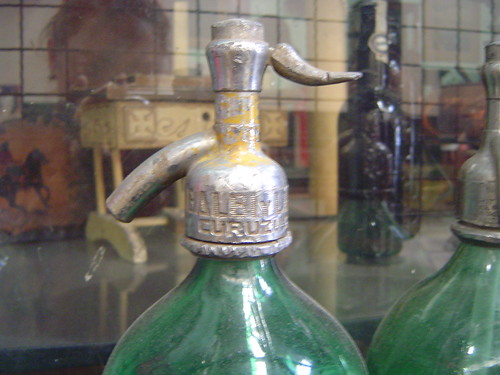
Every time I wander along Av Chile I intend to take a photo of these three plaques in the sidewalk that commemorate three people abducted more than thirty years ago during the last dictatorship. The other morning I finally had my camera with me.
I didn’t know the stories of these three: two women and a man. The date of their disappearance is the same – July 27, 1976: Susana Elena Pedrini, Jose Daniel Bronzel, Cecilia Podolsky.
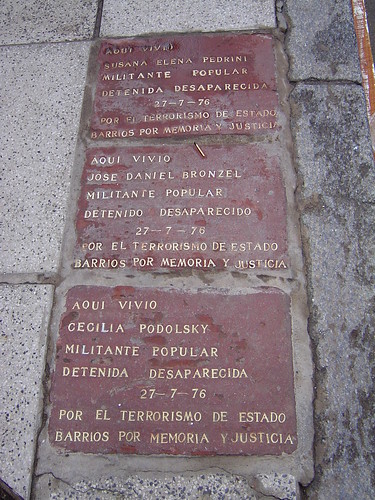
Their story
Thanks to the Internet even the disappeared are remembered so that their names exist not just as words on the sidewalk.
I thought that this would be a short, simple post but, by chance, just before pressing the publish button I thought to enter one of their names in Google, which returned several pages from different sites devoted to the disappeared. The Proyecto Desaparecidos site tells us (in Spanish) a little about their lives and death as well as providing a photo.
Do they look like a danger to the nation?
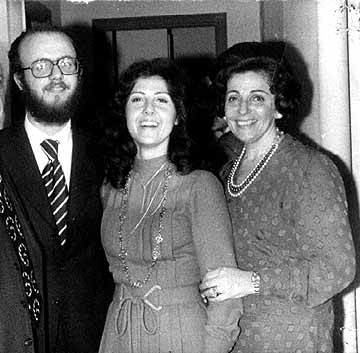
An architect and teacher at the University of Buenos Aires, Jose Daniel Bronzel and his wife Susana Elena Pedrini were both 28 and expecting a child when they were kidnapped along with her mother Cecilia, a 51 year-old housewife. Susana was 6 weeks pregnant.
Their lives came to a brutal end three weeks later on August 20, 1976 when they were executed with 27 others in an incident referred to as the Fatima massacre.
The bodies of the victims laid in an unmarked grave for more than 20 years until being discovered in June 1999. The bones of Jose Daniel and Susana were among the first to be positively identified by forensic specialists. The couple were buried in the British Cemetery in November 2000. From the research I find on the net, the remains of Cecilia Podolsky have not been identified.
… names shift from anonymous, random arrangement of letters to reflection of faces now absent from the world.
Next Page »

about an early gathering of the Madres in the Plaza. While this book deals mostly with the Abuelas de Plaza de Mayo (yet another group of Madres but one that doesn’t march in the Plaza), the book is excellent reading.










